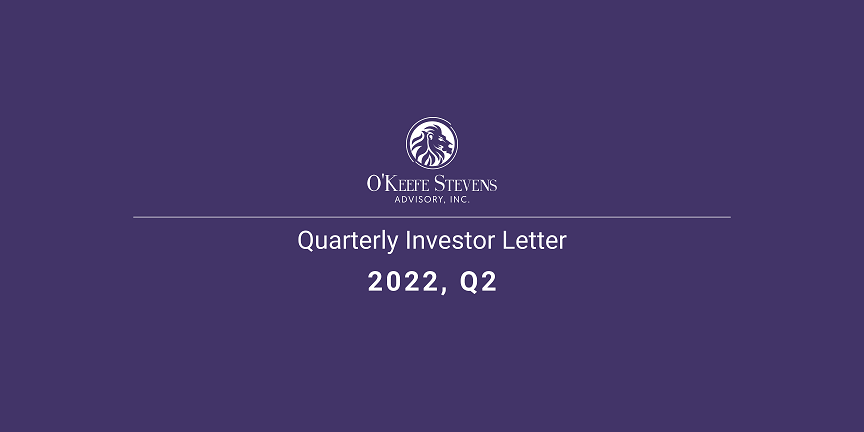Quarterly Investor Letter Q2 2022
Author: Dominick D’Angelo
Follow Up – Management Incentives
Our Q1 2022 letter discussed the ongoing misalignment between minority shareholders and management teams running these businesses. That is not rewarding management teams for showing up to work; instead, having quantifiable metrics correlating to a business’s long-term success. While the previous letter depicted ongoing malpractice, it’s worth reviewing examples of management teams that have skin in the game and are appropriately incentivized.
Donnelley Financial is a new but growing position (click here to read our thesis). On top of the improving business model, the aligned management team and incentive compensation plan give added confidence in our purchase.
Dan Lieb has done an incredible job turning this once declining business into a highly profitable and growing company. Dan Lieb owns 1.1% of DFIN, and Jeffrey Jacobowitz owns 10.2% through Simcoe Capital. Dan Lieb’s ~$10m stock position compared to his $780,000 salary leads us to believe he will maximize the value of his interest, given it’s over 10x his base salary.
Our thesis focuses on continued growth in software solutions. We believe the market underappreciates these higher margin and recurring offerings. Managements annual incentive plan incorporates a Software Solutions growth component whereby 20% of the annual incentive award is based on Software Sales growth. Management’s long-term equity incentive plan is 50% based on Software Solutions Sales and 50% on the company’s EBITDA margin. EBITDA is an appropriate metric for this company as they have a low debt profile, and the business is relatively capital-light, resulting in minimal D&A. In our opinion, Management is incentivized correctly as the drivers of future business success are Software Sales and the company’s ability to improve its margin profile. Tying management compensation to these metrics gives us added comfort that they will make decisions based on ways to maximize these metrics, resulting in a better business and higher valuation.
Another new position in the portfolio is Greenfirst Forest Products (ICLTF). More detail on this position can be found later in this letter. Greenfirst is another scenario in which our interests are aligned with Management. Paul Rivett, Chairman, owns 5.7m shares representing 3.2% of S/O, Rick Doman, CEO, owns 6.9m shares or 3.9%, Larry Swets, Director, owns 5.4m shares or 3%, and Mike Mitchell, Director, owns 4.9m shares or 2.8%. Additionally, board members’ compensation can be taken in stock or 50/50 stock and cash. All directors take 100% equity except one member, who must take cash and stock for regulatory purposes. Rick Doman’s stake of $10m+ compared to a salary of ~$275,000 gives us confidence that he will act in shareholder’s best interest. Paul Rivett, Lary Swets, and Mike Mitchell fall into the same bucket as their $100k directors fee pale compared to their equity stake. With 12% of the company owned by those running the business, we remain confident in their ability to maximize shareholder value.
The old Charlie Munger saying, “show me the incentive, and I will show you the outcome,” is one we continually reference. Those with skin in the game and incentivized correctly can be a powerful combination over the long term.
Portfolio Changes
Subsea 7 (SUBCY) – In Q2, we sold our position in Subsea 7. We purchased SUBCY in 2019 based on the company’s expansion into offshore wind farms. The 34 vessels SUBCY owned traded below replacement cost. A healthy balance sheet with net cash and $5.1B in backlog provided visibility into future revenues.
Acknowledging the company has gone through one of the most challenging operating environments one could imagine, our confidence in the company’s ability to generate a meaningful return on assets has declined. Management continues to suggest 2024-2025 will see margins normalize. Even if we assume the company returns to its highest margin profile of 15%, it still generates a low teens ROA. The company expects its renewables business to have long-term EBITDA margins of ~10% and an ROIC of 9-14%. At the midpoint, 11.5% ROIC isn’t poor. However, given industry dynamics, consistently achieving this return profile is unrealistic.
EBITDA is applicable for specific business models and capital structures. SUBCY is not a company where EBITDA makes sense due to the ongoing CAPEX needs. In 2022, SUBCY will spend $440m in CAPEX on a PP&E base of ~$7B. D&A has been more than $400m annually over the last five years. These vessels are capital intensive and require ongoing maintenance. Management’s continued use of Adjusted EBITDA as a performance measure does not instill confidence.
Our biggest concern is Management’s capital allocation decisions. Since 2010, SUBCY has taken $2.4B in goodwill impairment charges representing more than the current $2.3B market cap. Current CEO John Evan was appointed in January 2020 and thus did not make the final decision; however, he was COO since 2005 and played a critical role in these acquisitions. The capital allocation decisions concern us and indicate the competitive and sometimes uneconomical industry landscape. Continuing this trend, in April 2018, Subsea 7 announced a $2B bid for McDermott. Two weeks later, the company withdrew its offer, and In January 2020, Mcdermott filed for Chapter 11 Bankruptcy. On the one hand, Subsea withdrew their offer quickly, showing some restraint. On the other hand, it’s another acquisition that could have led to significant problems.
In June 2022, SUBCY announced additional provisions on a wind farm installation project due to cost overruns. What’s surprising is that they are maintaining full-year Adjusted EBITDA guidance. Other business segments may be doing better, or they consider this expense non-recurring and will adjust it. Either way, this result confirms our thoughts above. Note that this event occurred after we exited the position and was not a factor in our decision to sell.
To sum up our thoughts. SUBCY operates in a challenging industry. The management team has made questionable decisions in the past, and operationally, the underlying economics of vessels must improve to generate decent returns. While the current stock price appears attractive, it’s likely an asset that should trade below its replacement value due to average at best economic returns. The current environment allows us to exit a business that competes in a difficult industry, operated by a management team that keeps us up at night and purchase attractively priced and better-managed businesses.
Greenfirst Forest Products (ICLTF) – In Q2, we initiated a new position in Greenfirst Forest Products (ICLTF), a $300m Canadian lumber producer. While we are bullish on the primary lumber mill assets of the company, several hidden assets give downside protection should our lumber bet turn out poorly. We had the opportunity to spend several hours with Management at a dinner event. The added insights gave us added confidence in our position. We came away thrilled to be partnered with this team.
The company’s three non-core hidden assets are as follows.
- 114 acres in Kenora worth between $40-80m. ICLTF has $23m in capital loss carryforwards to offset capital gains associated with the sale.
- 203,000 acres of timberland in Kapuskasing. Greenfirst is potentially the only Canadian lumber mill with excess timber supply. The Canadian government controls 93% of timberlands with rights to harvest acquired through permits and annual harvest allotments. Greenfirst has no use for the timber; however, other lumber producers with spare capacity could harvest the land, increasing utilization rates and profitability. The value of the land will be compared to what it could generate through a carbon credits program. The land could generate $5-6m in annual EBITDA. At 15x, the land on an ESG basis could be worth $75-90m. A company that could not only use the timber but benefits from the ESG aspect would find this land more valuable, potentially resulting in a higher sale price. After speaking with Management, the Kenora and timberland assets should be sold by the end of the year.
- Greenfirst exports over 50% of lumber production to the US, subjecting them to tariffs imposed on Canadian softwood exports to the US at a 20% rate. Canadian lumber companies are appealing the rate to lower or eliminate it. With the cost of new home construction up dramatically over the past several years, we see the potential for rollbacks in this tariff to give some reprieve to new home buyers. These tariffs and ongoing appeal has resulted in ICLTF depositing $25m and growing into a depository account. Should the tariffs remain, the cash would be paid to the US government, and nothing would change for Greenfirst. On the other hand, should the tariffs get reduced, they would recoup the difference between the reserved and tariff payment. Companies have been selling these deposited funds between $0.45-0.55 per $1 deposit, receiving capital while shifting the legal dispute risk to a counterparty. After speaking with Management, selling these deposits does not sound like something they are interested in, foretelling how they view the outcome of the tariff dispute, which has a resolution date in early to mid-2023.
In our opinion, these assets range from $130m to $200m in value.
Before getting to the core lumber and paper mills, we potentially have 33-50% of the company’s value in non-cash generative assets actively marketed. While recent price declines in lumber hurt near-term earnings. We believe the underbuilding of single-family homes post the GFC1 will result in sustained demand for lumber. Ongoing mill operating improvements will lower breakeven costs and improve utilization rates resulting in higher returns and safer assets. Our full writeup can be accessed with a SumZero membership here, or you can email the address below, and we would be happy to send it to you.
Market Thoughts
Persistently high inflation and rising rates are on everyone’s mind. The Fed has the impossibility of lowering inflation while trying to maintain full employment. We are highly skeptical of this outcome, and the announcement of significant layoffs is underway at Coinbase, Stitch Fix, Peleton, Compass, and Redfin, to name a few. Other companies, including our beloved NVIDIA, have announced hiring freezes; in some cases, companies have rescinded offers to new hires.
After a year plus of constrained supply chains, companies including Target, Macy’s, Walmart, Overstock, and Wayfair, the latter two continually flood my inbox with promotions and coupons, are oversupplied with inventory. Durable goods inventory seems to have the most supply as people likely purchased these items while locked up over the last two years and have no need to purchase these products for several years. A recent CNN article (found here) indicates companies may adopt the Amazon model whereby instead of returning an item, one keeps the item and gets their money back. Restocking or offloading the returned item costs the company more than the profit they would otherwise get from reselling it. To go from a scenario where two years ago, we could walk into stores to isles of empty shelves to retailers being so bloated with inventory is fascinating.
Higher gas and food prices will strain budgets and result in less disposable income. With indices well off their highs, we have found more opportunities. However, we recognize that the range of outcomes for many of these businesses has become wider. It’s an exciting yet uncertain time. Understanding how businesses will perform over the next quarter or year is next to impossible. However, looking at a company’s normalized earnings profile, we are finding good businesses trading at single-digit earnings multiples, which get us excited about the future return profile of client portfolios.
One interesting exercise has been watching universities’ and individuals’ old (1-5 years) stock pitches online. It’s intriguing how an environment clouds rational judgment. Listening to stock pitches that started with “the current stock trades at a double-digit sales multiple and with conservative estimates we find the stock attractively priced…” was stunning. Historical base rates suggest low single-digit probabilities of these investments working out. High valuation stocks have been a bet on ZIRP2 lasting decades as the terminal value was typically the entirety of the value. If we went back to any other period, anyone using the words “19x sales, conservative, cheap, and margin of safety” in the same sentence would be considered crazy, yet, it was the norm over the past 5 years. How quickly things change.
Portfolio Top 5 Holdings
At the end of Q2, our top 5 holdings represented ~36% of assets, with NVDA representing almost 13.5% of the portfolio. The remaining four include QCOM, AMGN, L, and BKRIF. The concentration at the top of the portfolio declined slightly as some lower weighted positions have increased significantly to start the year, while NVDA was down ~40% in the quarter.
Legend
1 – GFC: Great Financial Crisis
2 – ZIRP: Zero Interest Rate Policy. Refers to the Federal Reserve holding fed funds rate near 0%.
Disclaimer
This document is for informational purposes only. O’Keefe Stevens Advisory is not providing any investment recommendations with the publishing of this document, and no firm performance data is included in this document.



No responses yet